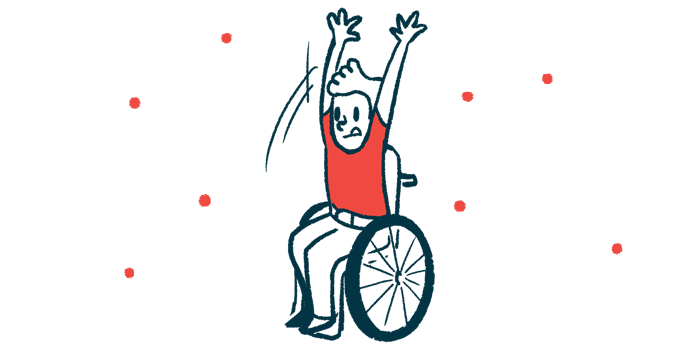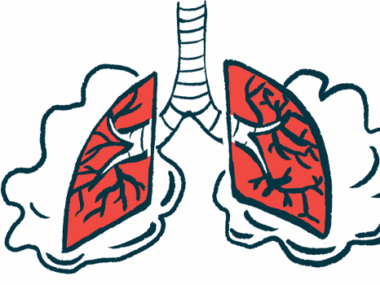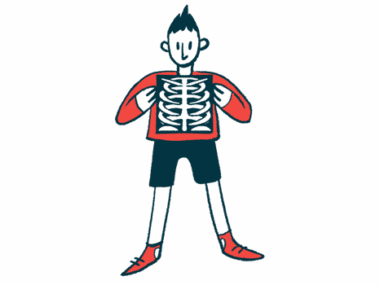DMTs boost fine motor skills in young SMA patients able to sit
Changes in patients not screened or treated right after diagnosis examined
Written by |

A year of disease-modifying therapies (DMTs) improved motor function, particularly fine motor skills, in people with spinal muscular atrophy (SMA) who could sit, but not walk due to disease progression before they had access to treatment, a study reports.
These functional improvements were independent of treatment-related gains in the flexibility of the neck, hip, and knee joints. The study, “Functional and structural analysis of SITTER patients with spinal muscular atrophy,” was published in Scientific Reports.
SMA is a rare genetic disorder marked by the degeneration of the spinal cord’s motor neurons, the specialized nerve cells that connect with muscles throughout the body. Without sufficient motor neuron signaling, muscles weaken and shrink, leading to motor dysfunction, joint contractures (stiffening), breathing problems, and scoliosis.
New DMTs have changed the course of the disease, especially for young children who begin treatment before or soon after the onset of symptoms. Their benefits include better motor function and breathing, fewer hospitalizations, and achieving new developmental milestones.
Patients are classified as non-sitters, sitters, or walkers, based on their functional level. However, upon treatment some patients may have experienced the natural course of the disease, along with its progressive deficits, due to not having had access to DMTs.
Evaluating changes in SMA patients
Researchers in Poland examined the changes in SMA patients, ages 5-20, not screened or treated immediately after diagnosis, who eventually received DMTs. The enrolled participants were sitters, meaning they could sit steadily for at least five seconds without upper limb support, but couldn’t walk.
Of the 21 participants (11 girls/young women, 10 boys/young men), 18 were diagnosed with SMA type 2 and three with SMA type 3. Eighteen patients had scoliosis. Nine were treated with Spinraza (nusinersen) and 11 with Evrysdi (risdiplam). The two treatment groups were similar in age, age at diagnosis, and the time elapsed between diagnosis and initial treatment.
The researchers emphasized that their research wasn’t “intended to evaluate the effectiveness of treatment, but to show the functional and structural changes in the sitter SMA patients.” The Hammersmith Functional Motor Scale-Expanded (HFMSE) assessed motor function and the Revised Upper Limb Module (RULM) measured fine motor skills.
The HFMSE scores didn’t change across all patients over the year, but scores on the RULM scale improved significantly. Gains in RULM scores were primarily seen in those treated with Spinraza.
Five patients improved by 2 HFMSE points, which was considered a new motor milestone, particularly in prolonged sitting, changing position from sitting to lying and lying to sitting, propping up on the forearms, and lifting the head while lying on the back. Two patients had a loss of 2 HFMSE points, or a decline in function, in prolonged sitting and standing unsupported.
Four participants saw a 2-point improvement in RULM scores, but each was associated with a different function: raising both arms above the head and hand above shoulder height with and without a 500 g (1.1 lb) weight. Most patients improved in the tearing paper function.
Most of those who received Spinraza showed gains in functional scale scores, with six showing HFMSE and eight showing RULM improvements. In the Evrysdi group, seven patients saw a decline in HFMSE scores, while seven showed improvement in RULM scores, and three had a decline.
Spinraza, Evrysdi differences
Spinraza and Evrysdi did have different treatment initiation times, with the Evrysdi group having been recruited at the end of the trial, which may have limited its therapeutic effect.
The patients had significant improvement in cervical rotation, or turning their head left and right, and in the hip joints. Neutral positions in the hip and knee joints increased slightly, “indicating the deterioration of contractures,” the researchers wrote. Still, the knee joint range of motion significantly increased, particularly for the left knee.
In the Spinraza group, the most remarkable improvement was in cervical rotation, followed by decreased (lessened) spinal asymmetries, as indicated by the supine angle of trunk rotation (SATR) at the lower torso. The range of hip joint motion and knee contractures remained the same, but the hip joint contracture worsened, while the range of knee motion improved, particularly for the left knee.
In the Evrysdi group, trunk parameters remained constant, with a slight deterioration of contractures and a slight improvement in the hip joint motion. The range of motion improved significantly for both knee joints, with increased contracture significant for the right joint.
Changes in the body structure parameters were not influenced by a patient’s age or the time from diagnosis to the first examination.
Lastly, a significant correlation was found between the 12-month change in HFMSE and RULM scores and right hip contracture among those treated with Spinraza. A similar correlation was found between left hip contracture and RULM scores in the Evrysdi group.
“All patients under study improved their motor function after 12 months,” the researchers wrote. “In both groups, more remarkable improvement was seen in the assessment of upper limb function (RULM scale) than in overall function as measured by the HFMSE scale.”







